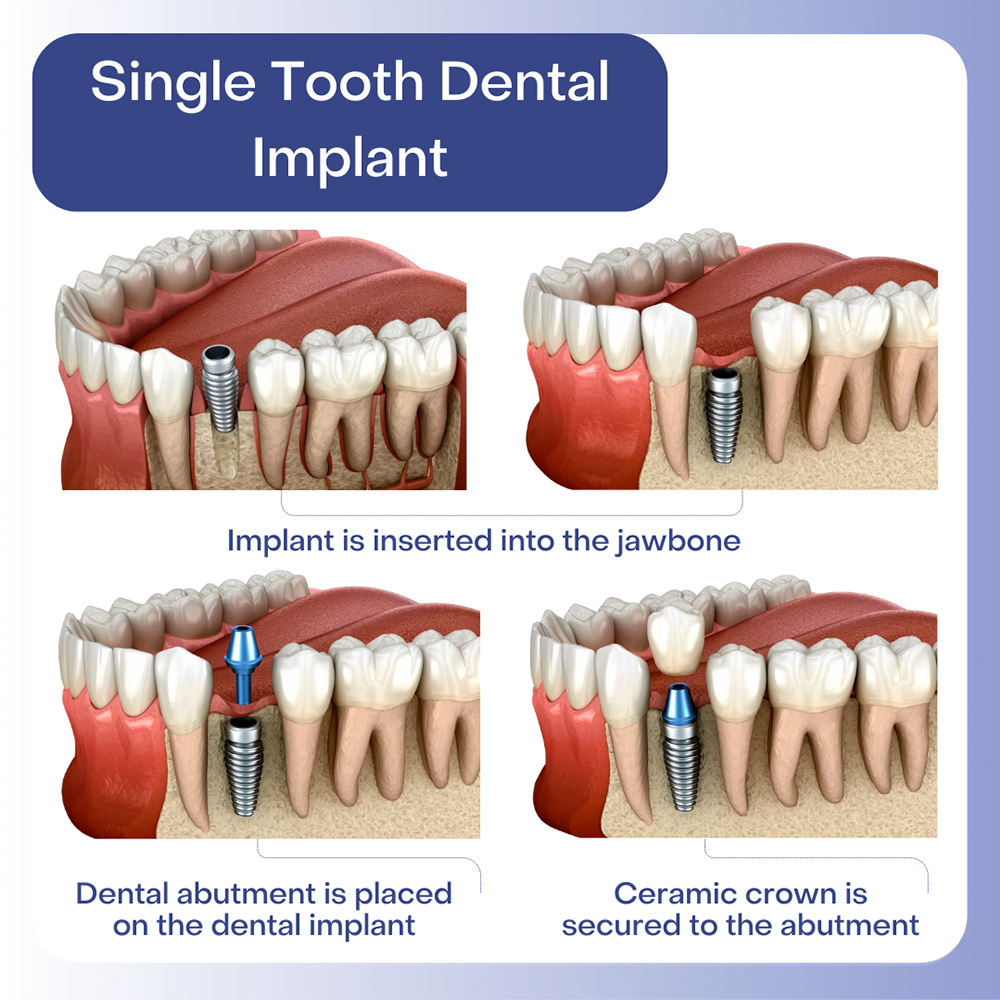More About Dental Sense
More About Dental Sense
Blog Article
See This Report on Dental Sense
Table of ContentsDental Sense Fundamentals ExplainedLittle Known Facts About Dental Sense.Some Ideas on Dental Sense You Need To KnowThe 20-Second Trick For Dental Sense
are medical gadgets surgically implanted into the jaw to restore an individual's capacity to chew or their appearance. They offer support for artificial (fake) teeth, such as crowns, bridges, or dentures. When a tooth is shed because of injury or illness, a person can experience problems such as rapid bone loss, malfunctioning speech, or adjustments to eating patterns that result in discomfort.Oral implant systems consist of an oral implant body and dental implant abutment and might likewise include a joint fixation screw. Dental veneers cost. The oral implant body is operatively inserted in the jawbone in area of the tooth's root. The dental implant joint is normally affixed to the dental implant body by the abutment fixation screw and extends with periodontals right into the mouth to sustain the connected fabricated teeth
(https://www.tripadvisor.in/Profile/dentalsense1)Structure of The Dental Implant System selecting dental implants, speak with your oral company concerning the prospective advantages and threats, and whether you are a prospect for the treatment. Things to think about: Your overall health is a vital element in identifying whether you are an excellent candidate for dental implants, for how long it will require to heal, and exactly how long the implant might remain in place.
Smoking cigarettes might influence the recovery procedure and reduce the long-term success of the implant. The healing process for the implant body might take several months or longer, during which time you generally have a momentary abutment in area of the tooth. the oral implant procedure: Meticulously comply with the oral health directions provided to you by your dental supplier.
A Biased View of Dental Sense
Implant failure can lead to the demand for one more surgery to deal with or change the dental implant system. Restores the capability to eat Restores cosmetic look Helps keep the jawbone from reducing as a result of bone loss Protects the wellness of the bordering bone and gums Assists maintain adjacent (close-by) teeth steady Boosts lifestyle Damage to bordering all-natural teeth throughout dental implant placement Injury to the surrounding cells throughout surgery, such as sinus opening Injury during surgical procedure (as an example, fracture of surrounding jawbone) Inadequate feature, such as feeling like the teeth do not bite with each other typically An experience that the tooth is loose or turning in place resulting from an abutment screw loosening Implant body failure (looseness of the implant body) because of systemic infection, which might be most likely in patients with uncontrolled diabetes mellitus because of neighborhood infection in bone and gums supporting the implant body due to postponed recovery, which might be more probable in people who smoke Trouble cleaning up the gums around the implant, resulting in poor click here to read dental health Unattended gum illness Post-surgical numbness due to nerve impingement or damage Always alert wellness treatment providers and imaging specialists that you have dental implants prior to any type of magnetic resonance imaging (MRI) or x-ray procedures.
FDA is not mindful of any kind of damaging events reported for MRI or x-ray procedures with oral implants. Oral implants systems are normally made from materials that adhere to global consensus standards of the International Company for Standardization (ISO) or ASTM International. These requirements have details of what makes a secure material.

A dental implant is a framework that replaces a missing out on tooth. With screw-like tools, the specialist inserts an implant into the jawbone, and it works as an anchor for a fabricated tooth, called a crown. A device called an abutment attaches the artificial tooth to the dental implant. The crown is personalized to fit the individual's mouth and match the shade of their teeth.
Dental Sense Fundamentals Explained
Some individuals are not qualified for oral implant surgical procedure. It is for oral specialists to run on people with: acute illnessuncontrollable metabolic diseasebone or soft tissue disease or infectionIf these issues are resolved, a person can have the surgical procedure. In, oral doctors avoid operating on people with: If individuals with any one of the above undergo oral implant surgical procedure, there is a greater danger of the implant failing.

Oral dental implant surgery is a personalized process. It's not the exact same for every person. But the following gives a general review of what you can anticipate your dental expert, dental surgeon, periodontist or prosthodontist to do: Place the implant surgically. Give you time to heal. Attach the message and final crown, bridge or denture.
Next off, your specialist will meticulously put the dental implant into your jaw. If your dental implant is near the front of your mouth, your dental expert will make a short-term tooth for you to wear till you recover.
Dental Sense - The Facts
Throughout the recovery phase, your jawbone needs to fuse to the dental implant. This process can take anywhere from 3 to nine months.
When your dental implant heals, your dental expert can affix the joint (little adapter post) and your final reconstruction (crown, bridge or denture). This normally takes concerning one hour to complete and may call for a 2nd minor surgery. You should not feel any type of discomfort throughout your oral implant procedure since your provider will utilize drug to numb your gum tissues.
Report this page